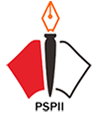QUALITY ASSURANCE SYSTEM BETWEEN THE ISLAMIC STATE UNIVERSITY AND THE STATE UNIVERSITY
DOI:
https://doi.org/10.15575/jpi.v2i2.787Keywords:
Islamic State University, State University, Quality Assurance.Abstract
The purpose of this research is to compare the quality assurance system in the Islamic State University at Universitas Islam Negeri (UIN) of Malang and The State University at Technical Institute of Surabaya (Institut Teknik Surabaya/ITS). The findings concerning quality assurance system cover; the reasons for implementing the quality assurance, the core value of quality planning, the quality assurance of implementation, the quality assurance of evaluation, the supporting factor of the implementation of quality assurance, the quality assurance strategy, and the result of quality assurance. This study uses exploratory mixed method research design with the developmental model instrument. While the process of this research starts with collecting qualitative data, then the extreme finding is followed by collecting quantitative data, and the end of this process is interpreting data together. From the qualitative data, it can be concluded that there is a difference between quality assurance in UIN Malang and ITS. The quality assurance in the institution management (X), the academic aspect (Y), and customers’ satisfaction (Z) was significantly different (significantly) between UIN Malang and ITS. Customers’ satisfaction at UIN Malang is influenced by the quality of management and academic with a larger proportion than in ITS.
References
Besterfield, D. H., (1999). Total Quality Management. Prentice Hall: United States of America.
Bottorf, D. L., (1997). COQ System: The Right Shuff, Journal of Quality Progress, March.
Collin and Porras., (2004). Built To Last: Success traditions Visionary Companies, Erlangga: Jakarta.
Collin., (1994). Good to Great, Harper Collins Publishing Group. New York.
Creswell., (2007). Research design: Quantitative, qualitative, and mixed methods approaches (3nd edition.). Thousand Oaks, CA: Sage.
Crosby., (1993). Quality is Free, Mc-Graw Hill Book, New York.
Directorate of Higher Education (Dikti)., (2003). Educational Policy. Jakarta
LPMP (Education Quality Assurance Institution) in higher education based on government regulation No. 63., (2009). http://www. Diknas.go.id
Murgatroyd and Collin., (1994). Total Quality Management and The School. Open University Pres, Universitas Michigan.
Sallis, E., (1993). Total Quality Management in Education. Kogan Page Ltd. London.
Sanusi., (2009). The 80th of Prof. Achmad Sanusi, Ph.D. And new publisher undertitle System Values: Alternative Education Faces. Bandung: Nuansa Cendikian, 2015.
Solimun., (2002). Structural Equation Modeling, Lisrel dan Amos. Malang: MIPA Faculty of Brawijaya University
United Nations Development Programs (UNDP)., (2016). Sumber: http://nationalgeographic.co.id/berita/2016/01/undp-indeks-pembangunan-manusia-indonesia-alami-kemajuan.
The Law of National Education System No 20 in 2003, PP (Government Regulation) No 19 in 2005 which was rived by government regulation No 32 in 2013 dan Kepres (President Judgment) No. 65 in 2009 about quality assurance system in PT (Higher Education).
Vincent., (2008). Total Quality Management. Gramedia Pustaka Utama: Jakarta.
Downloads
Published
Issue
Section
Citation Check
License
Authors who publish with this journal agree to the following terms:
- Authors retain copyright and grant the journal right of first publication with the work simultaneously licensed under a Attribution-ShareAlike 4.0 International (CC BY-SA 4.0) License that allows others to share the work with an acknowledgment of the work's authorship and initial publication in this journal.
- Authors are able to enter into separate, additional contractual arrangements for the non-exclusive distribution of the journal's published version of the work (e.g., post it to an institutional repository or publish it in a book), with an acknowledgment of its initial publication in this journal.
- Authors are permitted and encouraged to post their work online (e.g., in institutional repositories or on their website) prior to and during the submission process, as it can lead to productive exchanges, as well as earlier and greater citation of published work (See The Effect of Open Access).






